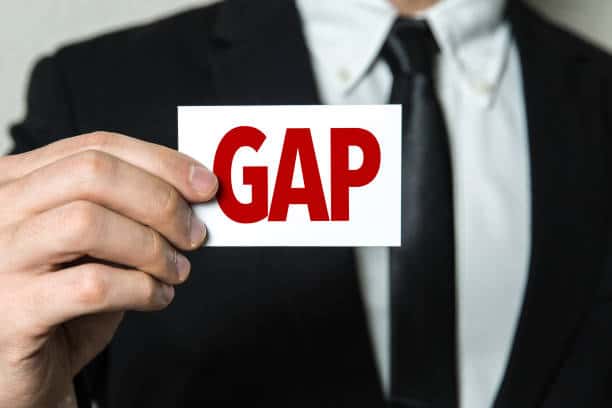How do you know if you have GAP insurance? This article explain all you need to know about this wonderful coverage. If you’re in the market for gap insurance, you might be wondering how to determine whether or not you need it in the first place. Gap insurance covers any amount above what your auto loan balance will pay if your car gets totaled in an accident. If you’re wondering whether or not you should invest in this type of coverage, here are some of the questions you should ask yourself as follows.
What Is Gap Insurance?
The theory behind gap insurance is simple: If you’re involved in an accident and your car is declared totaled, your insurance will probably pay out less than it’s worth. That leaves a significant gap between what you owe on your loan and what you receive from insurance. And if that happens, insurers won’t pay off that loan in full–they’ll take it over, leaving you responsible for future payments. With gap insurance, you can purchase protection against these shortfalls to ensure that your insurer pays off any remaining balance on your car loan. In most cases, though, it isn’t worth buying gap insurance. Here’s why.
How Do I Know If I Have Gap Insurance? First of all, because most people finance their cars at low-interest rates through loans with terms extending beyond five years, there’s a good chance that after two or three years of payments (and one or two accidents), they won’t have much of a gap at all. Also, there are other ways to reduce your risk of being left on the hook for debt when your car has been totaled—for example, by increasing your deductible so you would pay more out of pocket before being reimbursed. Finally, if you’re financing your vehicle and already have comprehensive collision coverage as part of your insurance policy, buying an additional gap policy may be redundant. After all, comprehensive and collision coverages already protect against many types of losses–including those caused by theft and natural disasters–that can leave you owing money on a loan even if your car is declared totaled.

How Does Gap Insurance Work?
Most auto insurers will extend coverage to you, including gap insurance, if you’ve purchased it within 60 days of purchasing your vehicle. Most policies cover up to $1,000 in expenses if your vehicle is totaled and it’s worth less than $50,000 (the average car is worth about $16,000). However, if your car has significant equity but not enough to replace it in full (like if you have a year left on a lease or have recently paid off loans), then gap insurance can protect you from any difference between what your car is worth and what it would cost to replace. It’s important to note that gap insurance doesn’t cover the price difference—it just gives you money towards making up that difference. So if you owe $20,000 on your car loan and it’s only worth $15,000 when it gets totaled, gap insurance won’t give you another $5,000 to make up for those missing dollars; instead, it will give you whatever amount is needed to pay off that remaining balance.
Who Needs Gap Insurance?
The short answer to that question is that not many people. You’ll most likely only need gap insurance if your car is financed—that’s because most car insurance policies only cover certain parts of your car and don’t cover what they call the portion paid for by [your] finance company. In other words, if you still owe money on your car, you may need gap insurance to pay off what’s owed in case of an accident. If you own your vehicle outright or have an older model that has depreciated significantly, then the chances are good that gap insurance isn’t something you need right now. But it never hurts to check before buying a new policy or selling your current one. For more information about whether or not you need gap insurance, visit our How Do I Know If I Have Gap Insurance? Page. You can also see our Top 10 list of Best Auto Policies for more information about some popular auto insurance options.
What are the Differences Between Deductible, Liability, and Collision/Comprehensive Coverage?
Unlike some states, Maryland doesn’t offer a discount on car insurance if you go long periods without accidents or tickets. However, drivers can save money in other ways. For example, drivers can opt for less coverage and still be protected. Most people find it difficult to get by without collision and comprehensive coverage, but that doesn’t mean you have to purchase both types of insurance. There are many factors to consider when deciding which coverage you need, including your driving record and financial situation. If you want to reduce your premium, consider going without collision and comprehensive coverage until you have more experience behind the wheel. If you decide later that these coverages are necessary, purchasing them separately will likely cost more than adding them at an earlier date. Drivers who don’t carry these coverages should also consider getting uninsured motorist bodily injury (UMBI) coverage.

When Should You Buy Gap Coverage?
Gap insurance is optional; you don’t have to buy it. But if you own a car and finance it, gap coverage can help protect you from what could otherwise be thousands of dollars in losses. For example, if your car is more than ten years old or worth less than $5,000 (if it’s a truck or SUV), insurance typically won’t cover its full value because of depreciation—when your vehicle loses value as time goes on. Worse, if your auto loan exceeds your car’s value at purchase, most lenders won’t roll that difference into additional financing. Instead, they’ll write off any remaining debt. That means you’ll lose money even though you still owe money on your car. To avoid these situations, some people choose to buy gap coverage. It helps pay off whatever portion of their auto loan remains after their insurer pays for a total loss claim. The policy also covers other costs associated with buying another vehicle, such as sales tax and registration fees.
How Much Does It Cost?
The cost of gap insurance varies from insurer to insurer. While you can find gap insurance for as little as $25 per year, it is often more expensive. For example, if you have existing car coverage, your auto insurance company may offer its brand of gap insurance at a fraction of the cost of an independent policy. The exact price will depend on your vehicle’s make and model, its current value, and several other factors. Always review your policy thoroughly before making any changes that affect costs. To save money, consider bundling additional services in one place rather than signing up for them separately elsewhere (which can add to the confusion). For example, buying life insurance through your auto insurer may be cheaper than buying a separate policy from another provider. It’s also worth comparing prices between providers; different insurers may cover identical gaps but charge different premiums.
Is There Anything I Can Do To Lower My Rate?
The short answer is yes, although it’s only really worth your time if you have high-risk factors for accidents. Gap insurance protects you if your car is stolen or totaled in an accident, and it’s more expensive to fix than your current insurer will pay. When you buy gap insurance, you might lower your rates by $200 or $500 over the years. (Don’t count on it—it might just be $200.) If you want to improve your car insurance score by lowering your risk factor, here are some suggestions that might be worth following:
- Buy anti-theft devices.
- Park in well-lit areas.
- Take public transportation when possible.
- Don’t text while driving, and avoid speeding tickets at all costs.
You can also request a discount from your auto insurance company based on certain actions you take. For example, if you install an alarm system, ensure your mileage is low and add any drivers with good records to your policy; for example, most companies offer discounts. Talk to agents about which discounts they offer so you can get every last dollar off!

Car Gap Insurance Example
Let’s assume that you have an outstanding $20,000 car loan. However, you also have an underwater vehicle worth only $7,000. So you decide to trade your car for a better one and take out another loan for $27,000. Before you drive off into the sunset with your new (and paid off) vehicle, consider gap insurance – It will cover anything between what you owe on your old car and what it’s worth. In most cases, gap insurance can help protect you from falling below the water again. How Do I Know If I Have Gap Insurance? For example, if you bought a new car for $30,000 but didn’t have enough money to pay off your old loan ($20,000), then gap insurance would pay off your remaining balance of $10,000. Check out our infographic above for more information about whether or not you need gap insurance when purchasing a new vehicle.
Pros and Cons of Car Gap Insurance
How Do I Know If I Have Gap Insurance? Unfortunately, there are no easy answers here. What you pay for gap insurance will depend on where you live and how many miles your car has. But one thing is for sure: you don’t need gap insurance if your car is under 36 months old or doesn’t have over 40,000 miles on it. If your car has actual mileage, it’s worth considering—but only if you can afford to pay for whatever might end up being left on the loan if your vehicle is totaled. In short, when deciding whether or not to get gap insurance, weigh what you would owe against what your insurer might give you in a settlement. And remember that, even if you buy gap insurance, it won’t cover every situation; some cars are too expensive to replace. For example, it may be hard to find a replacement for an exotic sports car if it were ever totaled. There’s also always a chance that your insurer could deny coverage due to damage caused by non-accident events like floods or vandalism. So before buying gap insurance, ask: Is my car worth more than $500? Do I have enough money set aside in case of an accident? Can I afford to make payments on my new vehicle?
Read Also
Auto Loan Tips: 9 Powerful Secrets For You
How To Find Cheap Car Loans Near Me

Bottom Line Car Gap Insurance
If you have more than $50,000 in outstanding debt on your car (including any existing loan balance plus tax, registration, and title fees), but your car is totaled and sold for less than that amount, gap insurance can help you pay off what you owe. Unfortunately, auto insurance typically covers less of your vehicle’s value—sometimes as little as 10 percent or 15 percent. How Do I Know If I Have Gap Insurance? So if you have only a few thousand dollars worth of debt left on your car, gap insurance isn’t likely worth it. However, if you still owe $10,000 or more on your car when it’s totaled in an accident, it’s probably worth getting some coverage. Also, if you’re leasing your car instead of buying it outright, your lienholder will probably require gap insurance. That’s because a lease generally requires that you continue making payments even after the car has been totaled in an accident; otherwise, they’ll lose money on their investment. For example, You owe $20,000 on a leased 2015 Honda Accord when it’s totaled in an accident and sold for $15,000 at auction. How Do I Know If I Have Gap Insurance question has been answer graciously in this article, take your time in reading it again and again till everything is clear to you.












